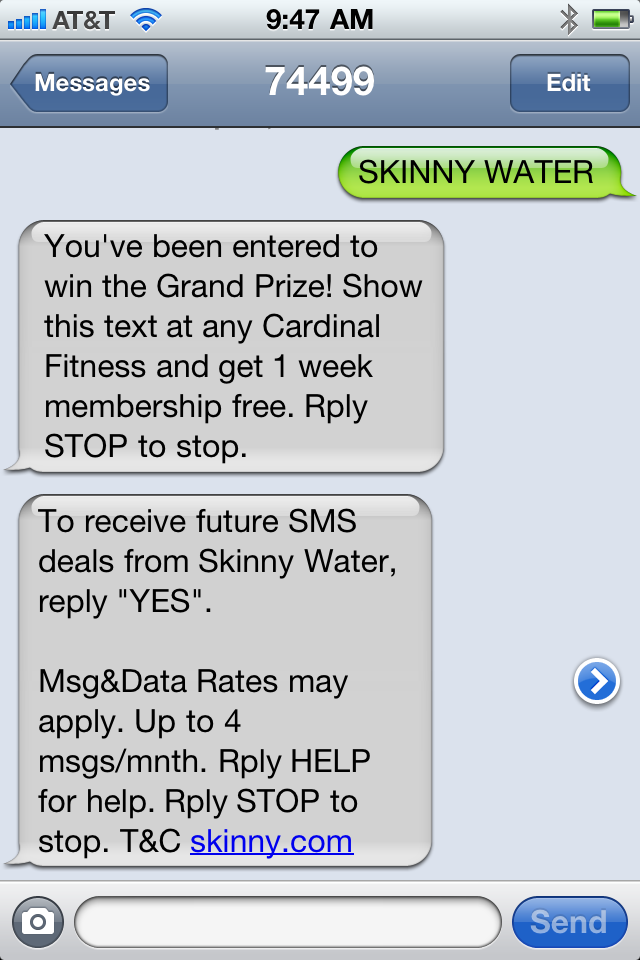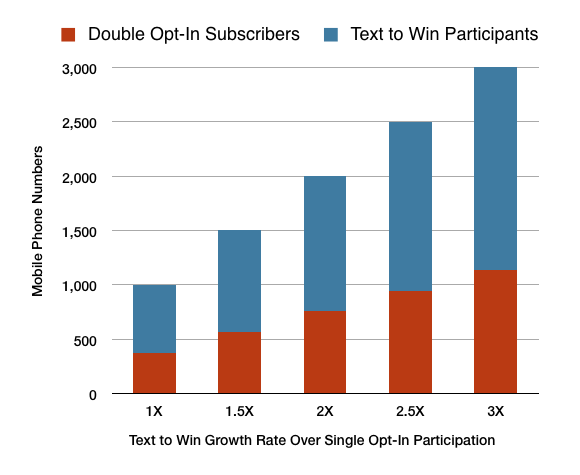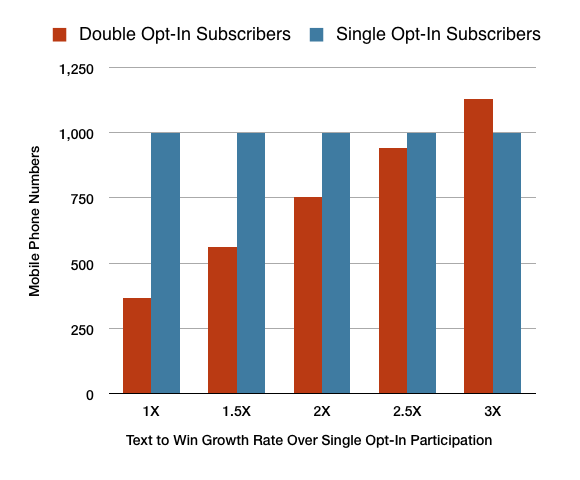Is Text to Win Effective?
Text to win is one of the basic facets of mobile marketing. It involves getting people to text your short code with your selected keyword to win a particular prize or reward. The concept is actually very simple, but the real question is whether it works or not.

Text to win is ultimately designed to get people to opt-in to your SMS database, which is a list of all the numbers of people who have texted your short code (i.e. 57545). This is important because you are not legally allowed to text anyone who hasn’t opted into your database. This is a good thing though, since these people have given you permission to text them while also giving the implication that they are interested in what you and your company have to offer. Once they have texted your short code with a keyword (i.e. CAR), you are now free to text them whenever you want. They also have the option to opt-out at any time so you don’t run the risk of texting the wrong people.
Of course, text to win centers around your subscribers wanting to win a particular prize or reward. There are two ways you can do this. You can use the double opt-in method, or the single opt-in method. Both have proven to be successful measures to get people to opt-in to your database, but they work differently. Let us explain.
- Double Opt-In: Your customers opt-in to your SMS campaign through a promotion, discount, or giveaway. In this case, using the keyword SKINNY WATER. Then you ask them via text message to opt-in to receive future text message promotions from your company. This is what it will look like:

- Single Opt-In: You notify your subscribers immediately that they have subscribed to your database and will be receiving future SMS promotions from your company. The signage will look something like this:

With double opt-in, you are first getting the customer to enter your contest, then with a subsequent message, you ask them to actually opt-in to your database. Single opt-in puts the subscriber in your database immediately, just be sure that you text them notifying them of this as soon as they’ve opted-in. You also need to give subscribers the option to opt-out at any time. This goes for both double and single opt-in campaigns.
As we mentioned earlier, both of these are effective at growing your subscriber database, but which one is better? Of course, it will depend on what type of campaign you plan on running and what works best for your company, but there are numbers out there that display the types of conversion text to win can create.
The following graphs were created based on the assumption that there is a 37% average double opt-in rate after the subscriber enters the contest. The 37% comes from seven SMS campaigns that were done using text to win and double opt-in. The X axis is based on a text to win growth factor over 1,000 subscribers who used single opt-in.

The next graph represents text to win’s growth rate using single opt-in. You’ll notice that the text to win campaign would have to get a 3 times higher participation rate compared to single opt-in campaigns to get more subscribers.

Of course, cost needs to be factored into both of these options. SMS messaging costs will be higher for text to win campaigns since you will be sending more messages. You will also have to factor in the cost of the product you are offering as part of the promotion.
The bottom line is there really is no way to say one text to win method is better than the other. Your selection will depend on your company’s goals and what you want to accomplish with your SMS campaign. The two methods are essentially the same except that double opt-in requires the subscriber to take two actions to subscribe to your database while single opt-in requires the subscriber to take one action.
(Graphs and statistics pulled from Tatango.com)





